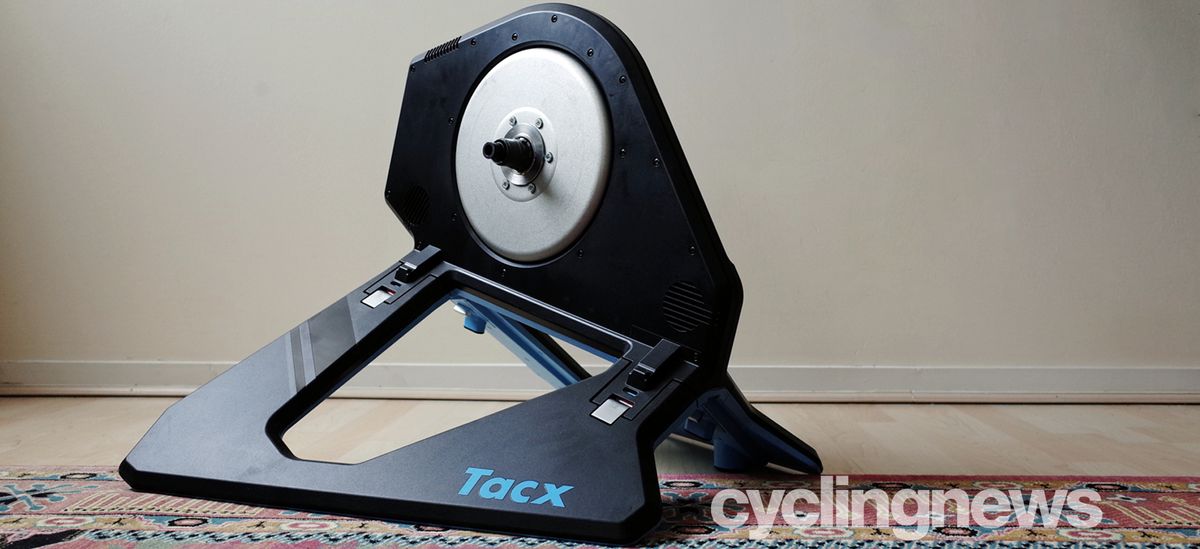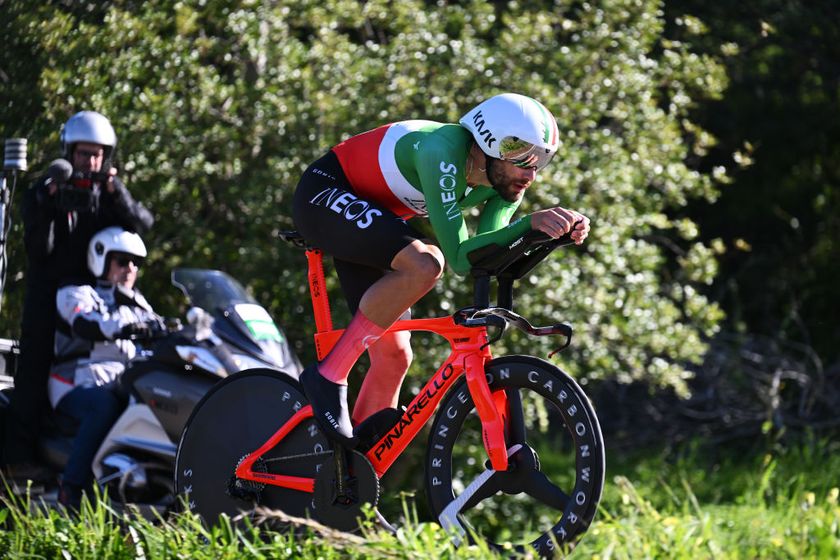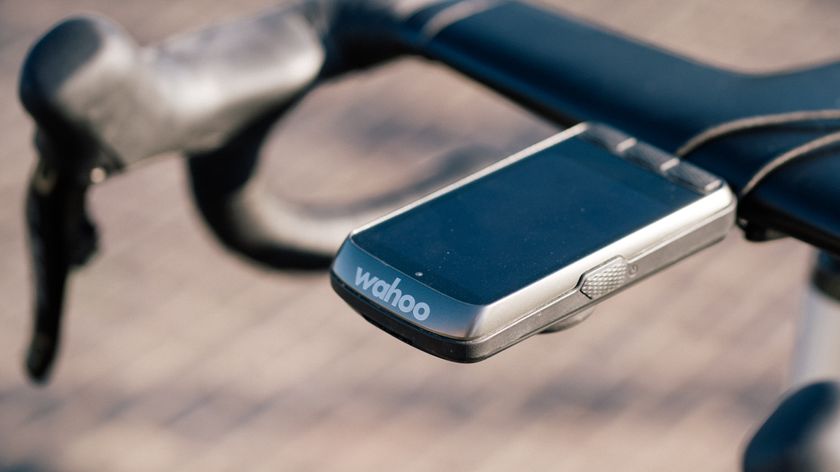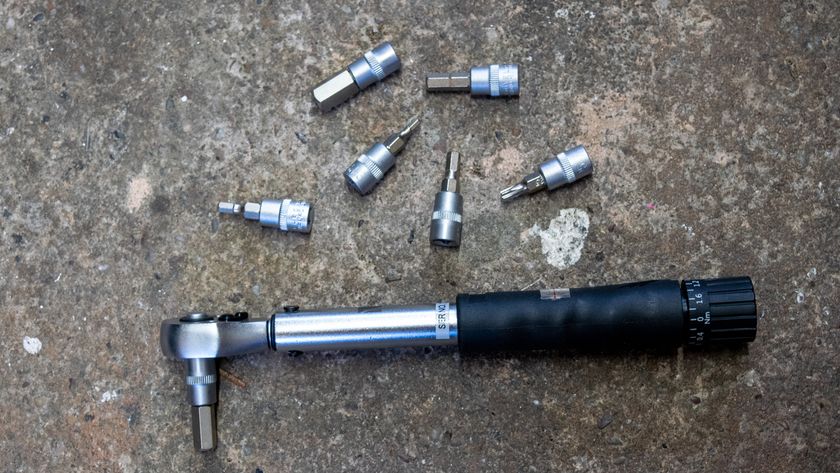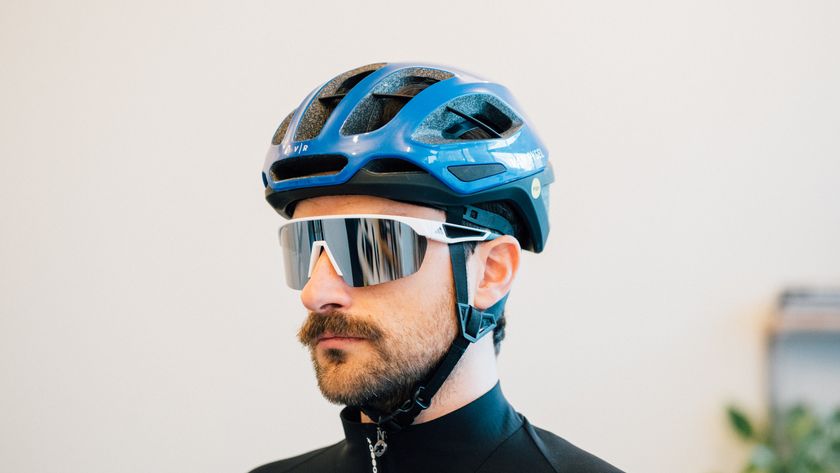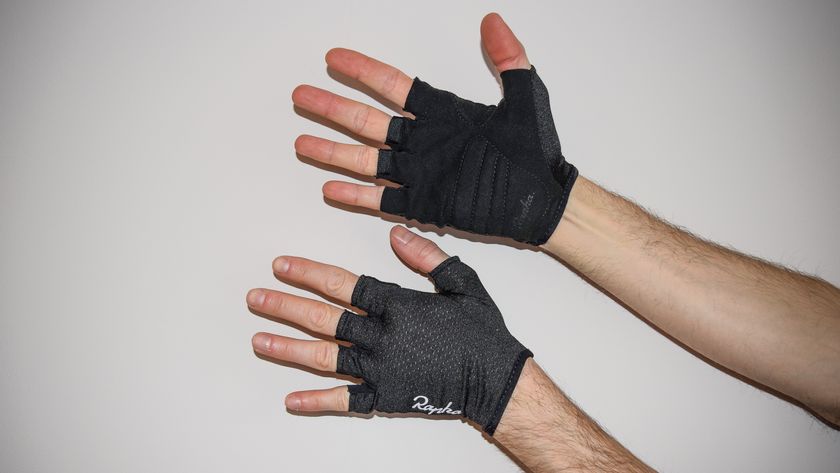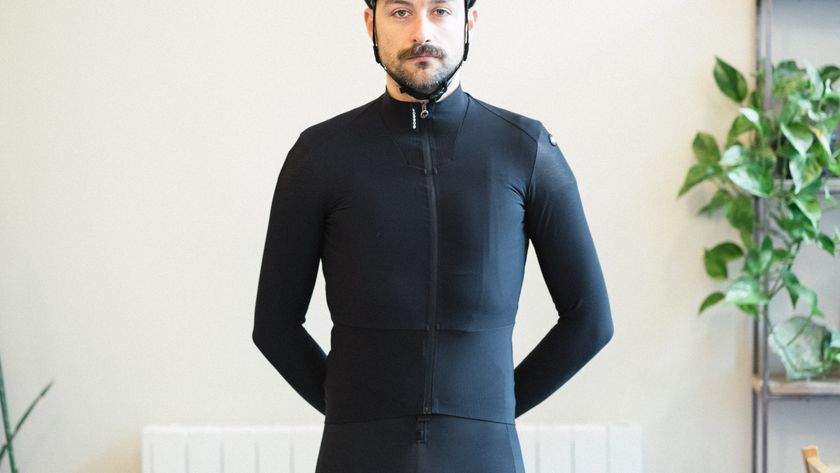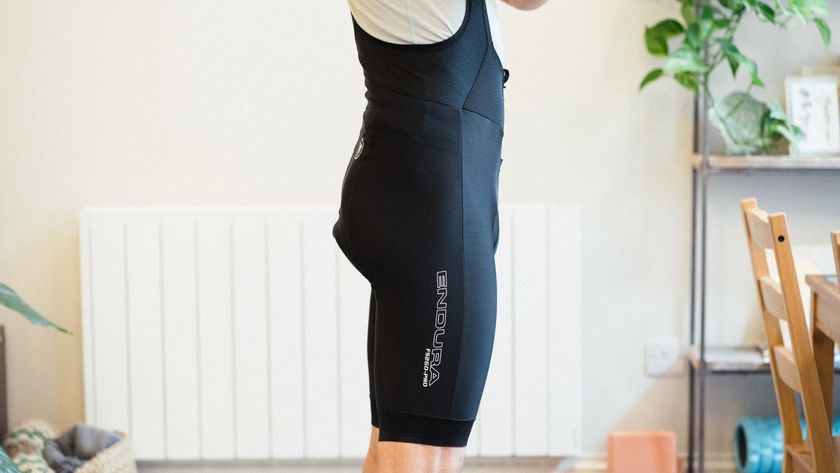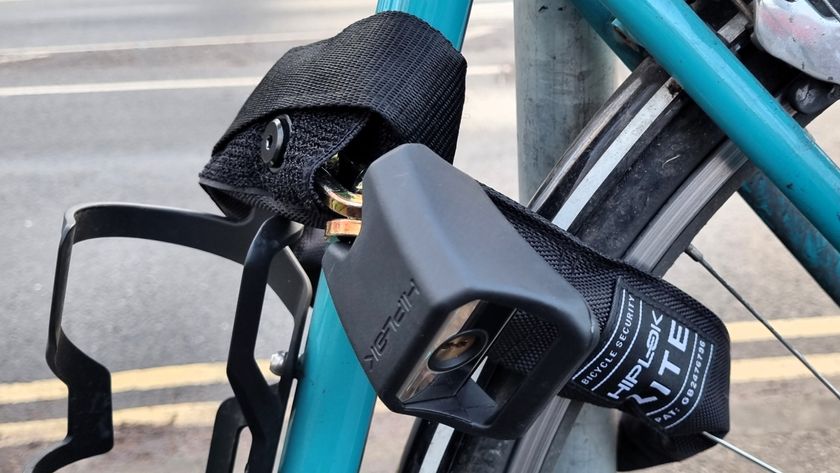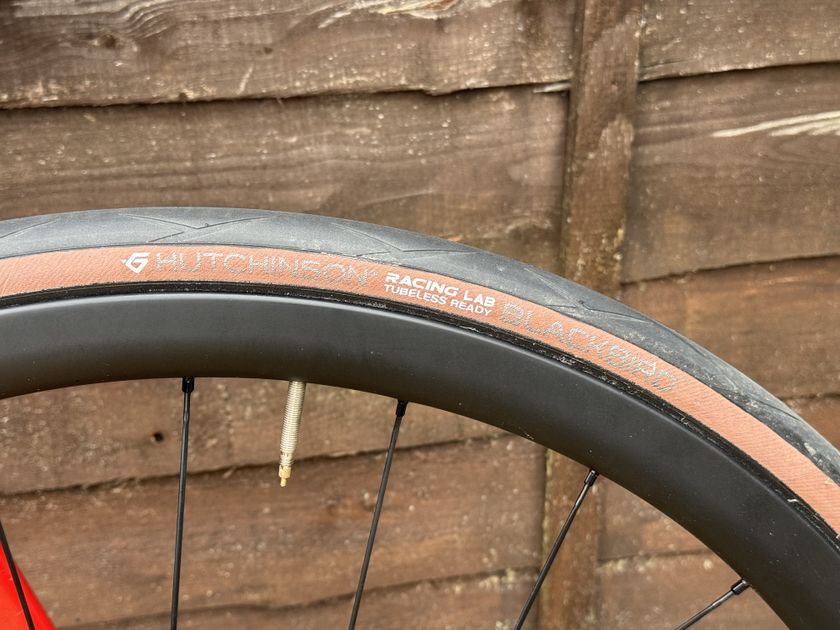Cyclingnews Verdict
Superb ride quality and packed with a top-spec for class-leading performance, some compatibility issues could be sticking points for some riders
Pros
- +
Very sensitive and smooth transitions of resistance
- +
Very stable
- +
Quiet in everyday operation
- +
No calibration required
- +
Pedal stroke analysis
- +
Can be used without a power source
- +
Replication of road surfaces is surprisingly realistic
- +
Folds down for quick and easy storage
Cons
- -
Road disc calipers rub on trainer casing without extra spacers
- -
Don't go for a 'cobbled' ride if you need to be quiet
You can trust Cyclingnews
- Unit weight: 21.5kg
- Flywheel weight: 275.6 lbs / 125 kg virtual
- Connectivity: ANT+, Bluetooth Smart
- Accuracy: +/-1%
- Max power: 2,200 watts
- Max grade simulation: 25%
- Freehub compatibility: 9/10/11sp Shimano/SRAM (Campagnolo, Shimano Microspline, SRAM XD- and XD-R freehubs sold separately)
- Retail price: £1,199 / $1,399.99 / €1,299 / $1,749.00 AUD
The Tacx Neo 2T is the flagship smart trainer from Tacx (a subsidiary of Garmin) and was launched in 2019.
A lot has happened since then: not least the pandemic, the indoor cycling boom that resulted from it and the industry downturn that followed. Competitors have launched numerous models, and Tacx itself has refreshed its smart bike, but the Neo 2T has remained unchanged.
Despite that, it still ranks among the best smart trainers around thanks to market-leading specs, innovative flywheel technology, add-on realism features, and the provision of detailed pedalling analysis.
This review was first written in August 2021, and given the market has moved on so significantly since then, such as with the launch of the basic-function, low-cost Zwift Hub smart trainer changing our perceptions of a good value trainer, and the launch of the high-spec, high-price Wahoo Kickr Move introducing new features, we thought it was time to review our review. Naturally, much of the product analysis remains accurate and relevant, but we've updated the things that were no longer correct, adding context where necessary.
For example, at the time it offered just as much connectivity as its peers, but Wahoo's latest models now offer WiFi and direct ethernet connectivity. Despite this, on paper, it's still among the most feature-rich options around with 1% accuracy, 25% gradients, 2200w of resistance, and even the ability to rumble in response to offroad surfaces in-game.
That said, it isn’t that straightforward. It doesn't come with a cassette, and the Neo 2T struggles with a few compatibility issues that may be a deciding factor for some users, as our original review highlighted.



Design and aesthetics
The Neo 2T shares a very similar outside form with the previous Neo 2 and the Neo 1 before it.
Compared to the competition, the Tacx Neo 2T looks superbly refined with its sleek enclosed casing and the wing-like supports form a sturdy base. The triangulated footprint creates a wide base and is very stable even when sprinting. I was able to rock the Neo 2T onto one leg a little during very spirited efforts but it never felt like it would pitch me off the bike due to the gentle angle of the supports. Rubber feet help stop the trainer from shuffling around when riding and there is a secondary set of rubber feet on the underside for when the trainer is folded away.
Tacx has also launched the Neo Motion Plates, which can be fitted to the base to offer around 50mm of fore-aft movement. This is similar to the feature that Wahoo has worked into the design of the Wahoo Kickr Move, although that offers around 150mm of movement.
There are lights that illuminate the underneath of the trainer when you are riding and change colour based on the effort you are putting in. These don’t provide any functional purpose other than providing a little drama and pain cave kudos as you ramp up your effort. There are three LED indicators on the side which provide an indication of power, ANT+ connection and Bluetooth connection and help offer some troubleshooting if an error occurs. The power cable plugs into the back of the trainer and although there is no handle to carry it around, the folded legs do provide a good hold to lift the 21.5kg weight.


Specification
The Tacx Neo 2T is amongst the most powerful trainers, able to punish your legs with a potent 2,200 watts of resistance which is delivered by electromagnets that simulate a virtual 125kg flywheel. The use of magnets means it’s quiet as well, so quiet in fact that your drivetrain will easily be the most significant source of noise when in use, just like most smart trainers nowadays. That is unless you have the 'Road Feel' feature turned on, which is a particularly noisy feature that adds a rumble of vibration through the bike to simulate cobbled roads or bridges in Zwift.
Tacx claims a power and cadence accuracy within 1% which is as good as it comes in smart trainers, and will satisfy the data nerds - not to mention the Zwift racing rules. Notably, the Neo 2T is also able to measure and provide pedal stroke analysis (when connected to third-party software or a Garmin Edge device) which is an area where Wahoo falls short. Elite's top trainers, such as the Justo launched in 2022, offer this function too.
Tacx offers its own app, available on Windows, Mac, iOS and Android devices, which has a few taster routes and workouts for free, and a huge library available if you choose to subscribe. The Tacx app is also used for firmware updates and to set up the trainer with variables such as rider weight and type of bike so the trainer can give as realistic a simulation as possible. Chances are most riders will opt for one of the many popular virtual cycling apps like Zwift or TrainerRoad for indoor riding.
Connectivity is straightforward with the Neo 2T allowing the trainer to connect to pretty much any device using either ANT+ or Bluetooth to control the trainer and record your rides. There are a few exceptions, for example, the Neo 2T will ignore gradient resistance changes when riding a route in Indoor Mode using a Wahoo device. This was flagged a long time ago, and as far as we're aware, is an issue that lies with Wahoo's software and hasn't yet been fixed. We are not aware of any issues with other non-Garmin head units although it’s something to be aware of. Ultimately if you do have a Wahoo and want to follow an outdoor course you will need to subscribe to the Tacx app or use a third-party service with this feature.



Setup
Setting up the Tacx Neo 2T is a fairly simple process. The legs fold out and clunk into place, while it’s pretty obvious when they are properly folded out, there is a small indicator that changes from red to blue to confirm it. Tacx also includes a riser block to raise and position your front wheel to the correct height.
Tacx includes most of the parts you need in the box although like all trainers on the market, if you are a SRAM or Campagnolo rider, you will need to purchase an additional freehub body.
We were using a SRAM XDR freehub and switching it was a simple process of screwing the axle adapter off, pulling the freehub body off and slotting the new one on before replacing the axle adapter. If you want to use a SRAM Eagle mountain bike cassette it’s just a case of fitting the included washer to correct the spacing. The Tacx Neo 2T doesn’t come with a cassette included, unlike the Wahoo Kickr and even the Zwift Hub, so you will need to factor this into the cost. Fitting the cassette is the same process as on a bike, explained in full in our guide on how to fit a cassette.


The Neo 2T is compatible with standard quick release (130x10mm and 135x10mm), bolt-thru (142x12mm) and the mountain bike boost standard (148x12mm).
While some competitors now include the end caps on packaging that helps you understand which to use, Tacx simply includes them in the package of spares. They are clearly marked though, which makes choosing them a little bit easier.
Changing the end caps is straightforward, but it does require some tools. The quick release adapters unscrew using a 5mm hex key and the bolt-thru adapters tighten with a 17mm cone spanner. From there, it should be just a case of fitting the bike, but unfortunately it wasn’t that simple in my case. Despite using the correct 142mm axle adapter, my bike's disc brake caliper touched the trainer housing. Tacx suggests in the manual that if this is an issue to use the included 2.7mm spacer. This wasn’t enough, but Tacx does offer a 4mm spacer on request. It's worth noting that this may not affect all road bikes and there was loads of clearance with wider mountain bike spacing.
Ultimately disc brakes on road bikes have been around for a while and dominating the sales of new bikes so it's an oversight by Tacx that it's not compatible straight from the box, especially considering the price point.
The power lead is a decent length although the Neo 2T has a party trick, it doesn’t actually require a power source. Instead, like the Cycplus T2 and the Elite Justo, it can run off the power generated by the rider. You do lose a few features, for example you won’t get the downhill freewheel simulation, and you will need to start cycling to bring it to life before any additional devices are connected, but it means you can use it to warm up at a race, do some Zwifting in the garden (if the weather permits, of course) or an unpowered garage.
You also technically don’t need to connect any additional devices to control the Neo 2T, with the trainer simulating a flat road and ramping up the resistance the faster you ride in standalone mode.
Riding experience
Performance when riding Tacx or Zwift routes is superb, with the ability to replicate up to 25% gradients and simulate downhills and a wide range of surfaces from cobbles to ice. The transitions in resistance are smooth and accurate and almost indistinguishable as you roll through virtual terrain making for a very natural ride feel when following a route as well. The simulation of surfaces adds a dynamic and engaging element to virtual rides, as do the simulated downhills when the trainer spins up the rear to simulate the inertia of descents and give you the feeling of momentum over rolling roads.
The negative of the Neo 2T’s fast and accurate transition of resistance is that the Neo 2T is pretty unforgiving during training sessions, as you transition into intervals of hard efforts, the resistance will change immediately. That means you need to keep on top of the cadence as the ERG mode does its job matching the sudden increase of power to your cadence. This isn’t necessarily a bad thing, you just need to be ready for it, plus the Neo 2T quickly recorrects any power overshoot allowing you to quickly settle into the effort.
If you fail - or stop - midway through an interval, the Neo 2T will require a very hard standing start effort to get going again as you try to overcome erg mode. Wahoo and Elite, meanwhile, now both offer an 'easy ramp' feature on their top trainers that makes it easier to get going again.
Power seemed to read consistently, and in my time testing it, nothing led me to doubt the claimed 1% accuracy. I also had no issues with connectivity dropouts.
Cadence measurement seemed accurate too although while it worked faultlessly with both of the road bikes I used on the Neo 2T, it might not work with short crank arms, as I found out with my mountain bike. This is because the cadence sensor is housed in the body of the trainer, which the crank arm passes. Short cranks don't reach the sensor and therefore don't create a reading.
I spoke to Tacx regarding this and the tech team confirmed Tacx was aware of this sensor issue and, despite it being an unusual occurrence, offers a solution consisting of a metal strip that attaches to the crank arm by zip ties. It feels like an awkward workaround, and if you also intend on riding the bike outside, it won’t be easy to remove and will gather dirt. The alternative is to record cadence through a separate stand-alone cadence sensor which is probably a better solution.
The Tacx app that can be used alongside the trainer is a bit of a mixed bag as well. In my testing, I found it slow to load, but there is a huge selection of standalone workouts, and a huge library of films and GPS routes available to explore which can be selected based on their length of climb or difficulty, perfect if you just have an hour or two and want to do a ride rather than a training session.


Verdict
There are a number of niggles with the Neo 2T, and while Tacx offers solutions to many of them using spacers and accessories, I feel that these problems shouldn’t exist in the first place, especially when you consider the price of the unit. The app isn’t perfect, but most users will probably choose to use a third party such as Zwift anyway.
Beyond the aforementioned issues, setup is extremely easy, the connectivity is excellent, the accuracy is great, and the specs are excellent.
The Neo 2T quickly folds out and connects to your desired app or recording device. There is no calibration needed or requirement for additional sensors so you can just get on and start riding. The plug-free usability is going to be a big selling point to some and its slim folded-down size makes it easy to tuck away when not in use.
The Tacx Neo 2T is a trainer that offers a top-spec, incredibly smooth riding experience and is packed with features that will appeal to casual virtual riders and those who take racing and training extremely seriously alike. The 2200-watt resistance output and 25% incline replication can pack a punch and the ride feel is quiet, smooth and superbly refined.
It might be getting a little long in the tooth, having initially hit the market in 2019, but it's still competitive among the best smart trainers around.
Graham has been part of the Cyclingnews team since January 2020. He has mountain biking at his core and can mostly be found bikepacking around Scotland or exploring the steep trails around the Tweed Valley. Not afraid of a challenge, Graham has gained a reputation for riding fixed gear bikes both too far and often in inappropriate places.
- Josh CroxtonAssociate Editor (Tech)
